Iron Chef Morimoto teaches us how to make authentic, udon noodles recipe from scratch. Delicious homemade noodles that are far more superior than store-bought ones!
The recipe and step-by-step photos is from Morimoto’s second cookbook “Mastering the art of Japanese Home Cooking.”
Why This Udon Noodle Recipe Is So Good
- Udon noodle recipe features just 3 ingredients: flour, a little salt and water
- You can make these with a large wooden rolling pin, but you can use a KitchenAid pasta attachment.
- Perfectly soft and chewy noodles with a smooth texture.
- Great for udon noodle soup is made with 3 ingredients: dashi, soy sauce and mirin
Ingredients
- All purpose flour
- Kosher salt
- Water
How to Make Udon Noodles Recipe – Step By Step
In a large mixing bowl, combine flour and salt. Add 1 1/4 cups water. Use hands to mix until dough starts to come together in a few large lumps. Firmly press and knead the dough, incorporating any loose flour until there is none left. If necessary, add a little more water, 1 tablespoon at a time, until you can incorporate all of the flour.
Knead the dough until smooth, about 5 minutes. Cover dough with plastic and let it rest for about an hour. This will make the dough relax and easier to roll out. *Jaden’s note – I like resting the dough for over an hour (timing is flexible here…I’ve let my dough rest anywhere between 1-3 hours, just keep it covered in plastic wrap), it just makes it so much easier to roll out!
Use a big rolling pin (Chef Morimoto likes to use a heavy, straight, wooden rolling pin like this one.)
As you roll the dough, occasionally rotate the dough 90 degrees and dust lightly with flour.
Roll evenly.
Dough thickness should be slightly less than 1/4″.
If you find the dough resisting too much, cover with plastic wrap and let dough rest for 5-10 minutes.
When you get the dough to desired thickness, fold dough in thirds (like a letter fold) and slice into 1/8″ thick noodles.
Dust noodles with flour and separate. Cook immediately.
An Easy Udon Noodles Recipe
Chef Morimoto says, “Dried udon noodles are fine, Store-bought pre-cooked udon work well. But there’s nothing like homemade udon and believe it or not, you can really make the irresistibly slick, chewy, spring noodles at home. Udon takes no great skill. Just water, flour, a rolling pin and a little patience. If kneading the dough, which activates the gluten in the flour and gives the noodles their texture, makes your arms tired, do what home cooks in Japan do: put the dough in a resealable plastic bag, wrap in a towel, and knead with your feet!”
What Goes Well With Udon Noodles
- Snow peas.
- Carrots (sliced thinly or use julienne carrots)
- Fresh mushrooms.
- Corn kernels.
- Hard boiled egg (already hard boiled, just cut in half)
- Thin, roasted seaweed slices (nori)
- Fresh bean sprouts.
- Spinach.
A Delicious Udon Broth Recipe
These Udon noodles make for a divine soup and it’s so easy.
Ingredients
4 cups dashi
2 tablespoons soy sauce
2 tablespoons mirin
How To Make Udon Broth
In saucepan, combine ingredients and bring to simmer. Serve with fresh udon noodles, garnish with sliced green onion.
Jaden’s Tips for Udon
- I am so using making homemade pasta with the help of a machine to roll to desired thickness! The rolling pin method was a bit challenging – getting the noodles to even thickness took some patience.
- If the dough is too hard and stiff to roll out, cover dough with plastic wrap, let sit for at least 10 minutes and let the dough relax.
- Try using your hand-crank pasta maker (this one is my favorite) or KitchenAid attachment to roll out to desired thickness, which is just under 1/8″ thick.
- After rolling out to desired thickness, fold sheet into thirds, then let it rest for a few minutes before slicing by hand. Hand-slicing the noodles gives a more homemade feel, I love the unevenness of hand-made noodles.
- I separated the dough into 4 balls, this made it easier to roll out, instead of dealing with a massive mound of dough!
- Fresh udon takes a little longer to cook than fresh Italian pasta. Let it cook 7-12 minutes in gentle simmer. Cooking time really depends on how thick your noodles are. Check at the 7 minute mark and adjust. The udon should be soft but not mushy.
- After cooking noodles immediately dunk them in a ice bath. This will help remove excess starch, stop cooking and bring more “bounce” to the noodles.
- If you are serving the noodles in a soup, cook the noodles separately from the broth. Meaning, don’t try to cook the udon noodles in the broth itself. Too much starch will be released in cooking process.
- The broth for udon noodles soup is simple. Start with the basic recipe, and add vegetables, seafood and meats as you please.
Thank you for supporting Steamy Kitchen!
Even if you don’t buy the product shown, starting your Amazon shopping here helps us small family business. We get a small commission from Amazon that helps keep this site running free!
More Japanese Noodle Recipes
Have you tried this Udon Noodle recipe? Feel free to leave a star rating and I’d love to hear from you in the comments below!
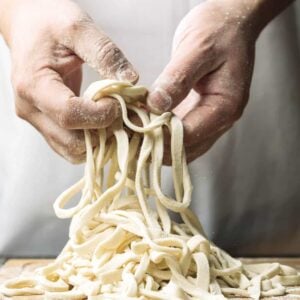
Homemade Udon Noodles Recipe from Chef Morimoto
Ingredients
- 5 cups (600 grams) all-purpose flour, sifted, plus more for dusting
- 1 tablespoon plus 1 teaspoon kosher salt
- 1 1/4 to 1 1/2 cups water
Instructions
To make Homemade Udon Noodles:
- In a large mixing bowl, combine flour and salt. Add 1 1/4 cups water. Use hands to mix until dough starts to come together in a few large lumps. Firmly press and knead the dough, incorporating any loose flour until there is none left. If necessary, add a little more water, 1 tablespoon at a time, until you can incorporate all of the flour.
- Lightly dust work surface with flour. Knead dough (folding and firmly pressing with your palm, folding and pressing forcefully) until dough looks and feels fairly smooth, about 5 minutes. Form dough into ball, wrap in plastic wrap, and let rest at room temperature for 1-5 hours.
- On a lightly floured surface with ample room, knead it again for a few minutes. Divide dough into 4 equal-sized balls. Dust each ball with flour and cover with plastic wrap until ready to roll out.
- Use rolling pin to roll out the dough, occasionally rotating the dough 90 degrees and lightly using with flour if it threatens to stick to the pin, until just between 1/8" to under 1/4" thick. If the dough is too difficult to roll out, cover with plastic wrap, let rest for 10 minutes, and then resume. This rest allows the gluten to relax and makes it easier to roll out.
- Fold the sheet of dough into thirds (like a letter fold) and then slice widthwise into approximately 1/8" thick noodles. Gently separate the noodles and toss them with a little bit of flour, just so they don't stick together. Cook right away.
To Cook Homemade Udon Noodles:
- Bring a large pot of water to boil and prepare a large bowl of icy water. Add noodles to boiling water, stirring frequently and adding 1/4 cup fresh water if the water threatens to bubble over, until they are fully cooked but not mushy, 7-12 minutes (depends on how thick your noodles are). Unlike Italian pasta, Japanese noodles shouldn't be al-dente, but don't let them get mushy.)
- Drain noodles, transfer to icy water. Briefly and gently rub the noodles with hands to remove some of the starch. Drain from cold water.
The cookbook features Japanese cooking, from classics like miso soup and chicken teriyaki…to dishes that are common in Japanese households, like Omuraisu (omelet with ketchup fried rice) to Sake Shioyaki (salt-grilled salmon).
I had the pleasure of personally trying some of Morimoto’s creations at the grand opening of Morimoto at the MGM Grand in Las Vegas. Not only did I get to meet Morimoto, enjoy his sushi, but he even sang in Japanese for us! See end of post for photos of his new restaurant.
Recipe and photos reprinted with permission from HarperCollins Publishers © 2016 Masahuru Morimoto.


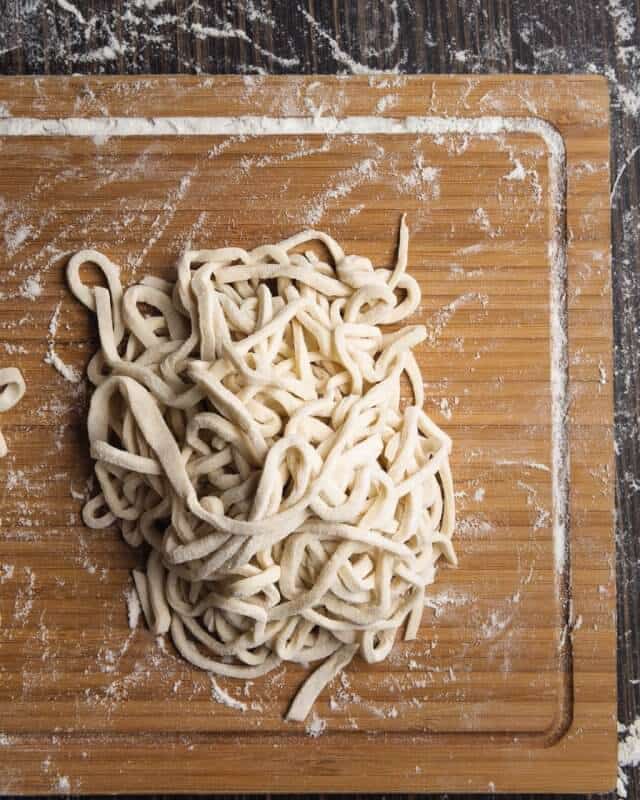
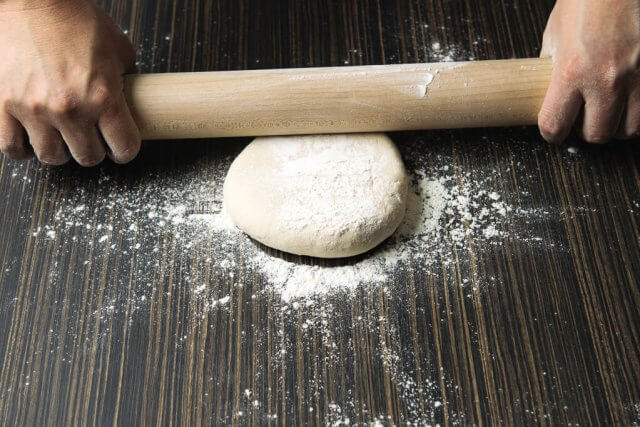
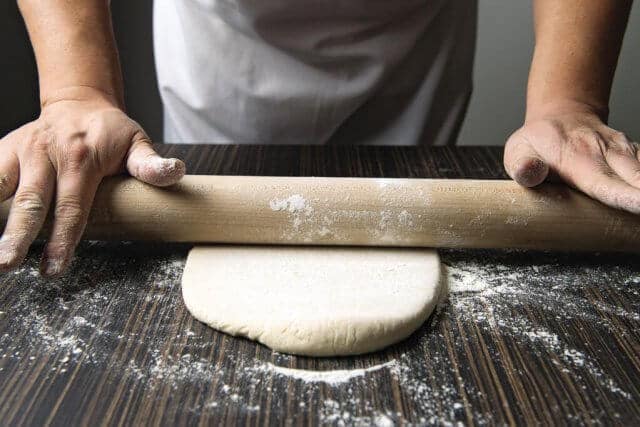
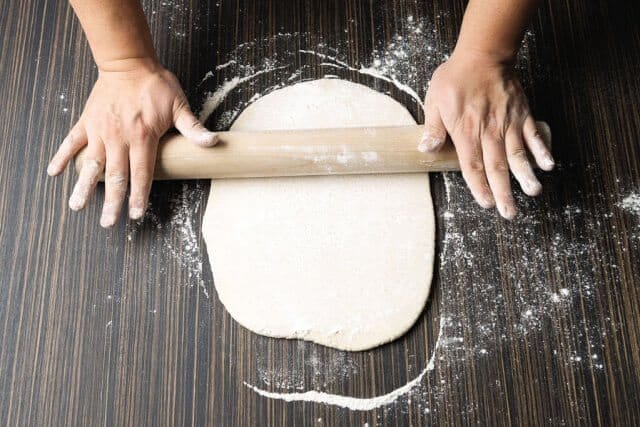
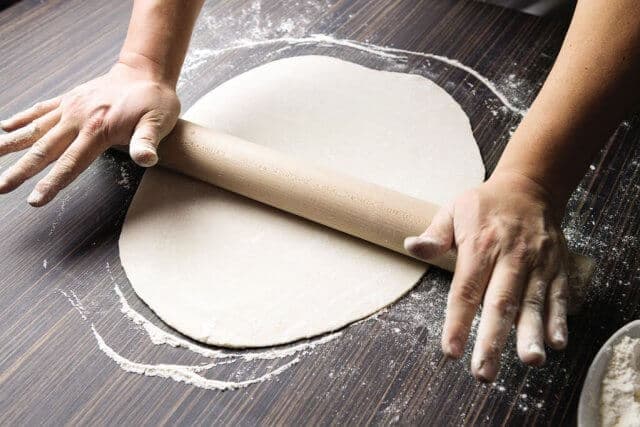
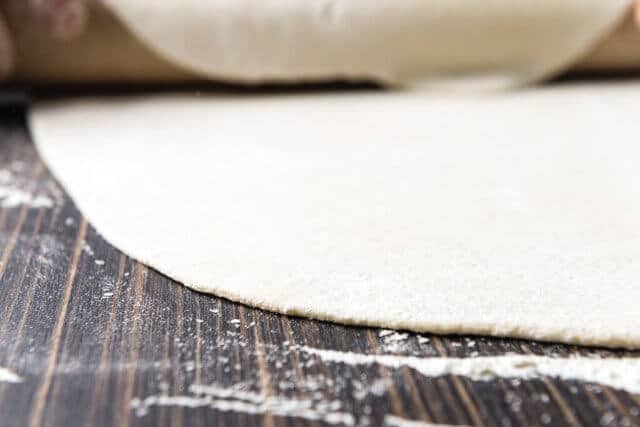
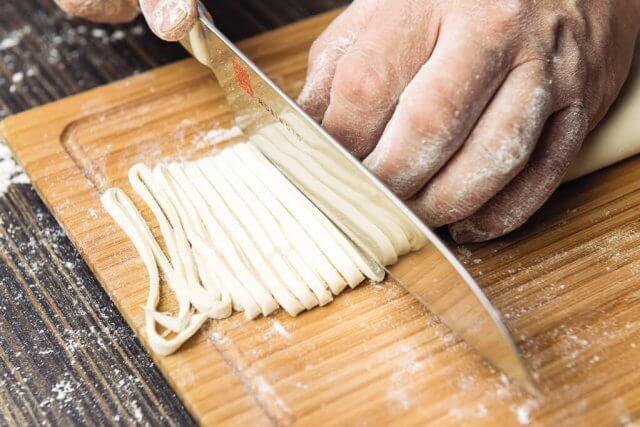




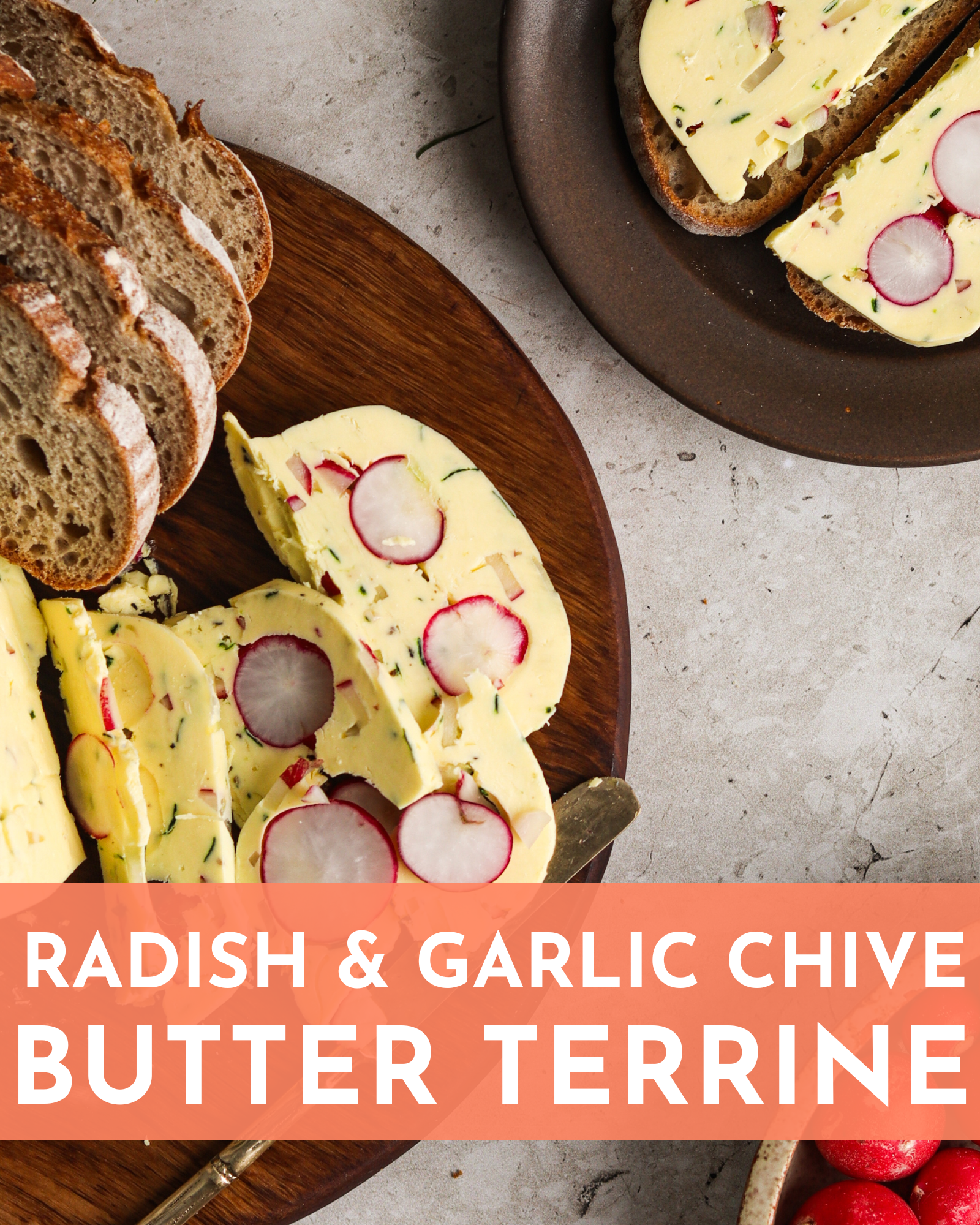
I see I am not the only one who loves this recipe. Thanks for sharing. It does take a lot of flouring to be able to do the 3-fold. I used my hand cranked pasta machine to cut into noodles. These are silky and have just the right amount of “chew” without being tough. I did use my food processor to start the mixing but followed all of the other directions.
I used them with a vegan sauce I use for mapu tofu, tossed in some shredded spinach and sprinkled with some black sesame seeds.
I had some leftover and they were great the next day.
The next time I made them I cut the recipe in half and it was just perfect for 2 of us with a spicy broth and baby bok choy.
If one has a chamber vacuum sealer, then one can speed the dough resting / hydration process by first exposing the dough ball to a vacuum for several minutes. I find that this is particularly useful when one is using part freshly ground flour.
This idea comes from a standard technique for marinating meat. I have not seen it applied to noodle dough, but I rely on it after stumbling upon it as an experiment. I know of no other way to obtain the resulting dough texture, which is fairly remarkable.
Great Recipe
Can you freeze the noodles?
There is no reasonably priced udon to be found in my little town, so I am going to have to try making my own. I only need 1 serving at a time, and would love to be able to store the rest to use later. Would I be better off freeZing the cut noodles, or putting them in my dehydrator to get them completely dry, and storing in an air tight bin? I would love to have single serving batches of homemade noodles on hand to pop into some boiling water whenever a craving hits.
Yes, you can freeze the noodles but first cook them as instructed. Submerge in ice cold water, drain, portion and package in freezer safe ziploc bags. Can last1-3 months in the freezer.
I made these noodles last night! They were delicious. I too had an issue with folding the dough in thirds and cutting. I tried cutting just once, and all three layers mushed together, and were inextricably bound. I’m glad I didn’t cut all of them that way, or I would have had to start over with rolling the ball back out. So it took a bit longer to cut each ribbon one strip at a time. I also wish I’d rolled the dough out thinner. Next time, I’ll pull out the pasta machine to make the dough more uniform. I didn’t feel like taking the machine out and getting it all set up. I think it’d be worth it though to get the dough thinner. Also, I only boiled the noodles for about 5-6 minutes. I was glad I didn’t let them boil past that, or they may have been mushy. All in all, very delicious noodles, and I will definitely do it again!
when cutting the 3 layers at once if they’re mushing together you’re not using enough flour. don’t be afraid to add more.
Wow! I made this recipe today – I didn’t wait the time for the dough to rest – it came out delicious! I have some leftover and I will try to freezer ☺️ Thank you so much for the great recipe!
These turned out so great
Great recipe! So convenient to have fresh udon noodles vs. ready made or dried from Asian grocery stores which we do not live close to.
Our only issue was when cutting the dough into noodles. We rolled the dough to the thickness your recipes calls for, folded the dough into thirds, and cut into noodles. Our noodles once cut did not separate when tossed with flour or when we cooked them. So we ended up with really thick little cigars so to speak. Still tasty, just thick.
Is it considered ok to cook the noodles in broth to impart flavor or is it more recommended to do the shock & rinse thing before adding to soup?
Oh my goodness! Have tried numerous recipes and the ones I have tried r totally delicious!! I told my husband who is a meat and potato guy has to try at least one new meal a month and he is actually enjoying them!! Ha who knew!!!
Great food blog, can you change to cooking, food or landscape photos instead of animal prints? No visually appealing or enticing for some. Eww.
The Cherries turned down a ?5million bid but word of that has spread like wildfire and Arter, 27, will have more interest at the end of the season.
I’ve been looking for a recipe for udon Noodles for as long as I can remember now I can’t wait to try making some!! They are my absolute favorite!! Since where I currently live the Asian market doesn’t exist I need this more than you can imagine.Party for my tastebuds coming up
Hi!, thanks for the post.
Is use of sodium carbonate (kansui) recommended or required in udon as in ramen?
Can udon leftovers (uncooked) be frozen to cook later?
Thanks!
Hi Hector – kansui is used in ramen, and I’ve never used it in udon! You can freeze udon and cook later, but try to keep them in layers or bundles (not a giant clump)
I made these today and they were INCREDIBLE! Using a stand mixer made the kneading process ridiculously easy!
Thank you so much Natasha! – jaden
Is it 5 cups + 600 grams of flour? or either 5 cups or 600 grams of flour? coz if adding both it seems to be a lot of flour just for 6 servings
Hi Chris! It’s 5 cups (600grams) – not both. Sorry the spacing was funky in the recipe
Made noodles for the first time in my life using this revisor, and they were perfect, best noodles I’ve ever had, so silky..
Thanks!
Thank you so much! Jaden
Hi Jaden, would it make any difference if I use Himalayan salt?
Go for it! I use Himalayan salt as well.
Hello!
Wanting to try this recipe sometime, but I have a question. Would it be possible to store the dough balls in the freezer so I can keep them for longer? Would be amazing if I would only have to flatten and cut the noodles without having to make a fresh batch after three days.
Cheers!
Hi there – Yes, you can freeze the dough.
wowowowowowowowowowowowowowowowowowowowoow
How long can you can the dough? Or the udon
Hi Joyce – you can keep dough (wrapped tightly) in refrigerator for 3 days. When ready to use, let sit on counter until it comes to room temperature. The fresh udon (once you cut it) doesn’t keep that long. I would use it the same day. After cutting the udon, toss well with flour and lay single layer on paper towels. Cover to prevent drying out.
Hi there. We let our dough rest for about an hour but when we came to roll it out in the pasta roller it had holes in it and was quite stringy. Did we not let it rest for long enough?
Hi Suse – No, an hour is fine. Usually when that happens, it means the dough went into the pasta roller that was set to a “thin” setting. Or, the dough that you put into the roller was too thick. Just fold in half, run it through the pasta roller again (this time at the thickest setting) and repeat until the dough sheet is smooth.
Thank you so much, this came out absolutely delicious
My my great grandmother used to make these for us all the time when I was little. Sadly, none of us paid too much attention and she passed away over a decade ago. Looking forward to trying this with my daughter. Thank you for sharing your recipe.
Thank you Chide love udon noodles are devine now I can make my own!!!!!
OMG! I love Udon but you can’t buy them fresh where i live… so i decided to try this recipe and it was PERFECTION!!!
I was skeptical how flour, salt and water would give me the chewiness of the Udon but it was just amazing!
I used my kitchenaid at setting #1 to flatten the dough but i cut it by hand to give it more personnality.
Absolutely lovely!!! Thank you so so much!!!!!
Thank you so much Manon! -jaden
My family has been making udon every New Year’s Eve on my Grandpa’s pasta maker for over 70 years. Sadly, we moved and do not get to partake in the annual udon making so we are excited to try this recipe.
The recipe calls for less than a 1/4″. I have a KitchenAid Pasta attachment which has 8 settings (though never used). Setting 1 is the thickest on the Kitchen Aid Pasta attachment at about 1.8mm (or less than 1/12″), which is much thinner than the recipe suggested. Do you have a different Kitchen Aid Pasta Attachment? Or is Setting 1 good enough?
Thank you so much, Jaden!
P.S. I love the pictures with Iron Chef Morimoto. How fun!
I actually like my udon a little thinner than Chef Morimoto calls for, so I use setting 2!
I love udon noodles, I never knew that they were so easy to make! Is there any way i could store the noodles? Like make a lot and store it for future occasions?
You can make the noodles, lay them out in single layer and let them dry to make dried udon noodles. Or you can freeze (cook frozen).
Great ! Is it possible to freeze freshly made precooked portion to have for week dinner ?
Yes! Absolutely. When ready to cook, cook them while frozen (don’t defrost, otherwise it will become a gummy mess) and add time to boiling. You’ll have to test and taste as you go for timing.
Can’t wait to make some udon this weekend and watch “Udon” the movie too (which is so wonderful and bittersweet).
Oh! I didnt know there was a movie called Udon! I will def have to seek it out. -jaden
just has udon based soup in a Japanese restaurant that is primarily sushi oriented, much prefer Japanese hot dishes this time of year, so thanks for sharing this recipe! I agree the pasta attachment is the way to go for these types of noodles! Thank you for sharing this!
Thanks so much for this recipe! We tried it last night! The udon tastes so much better fresh – and the texture is the perfect bite. We used a pasta roller machine to roll it out. Will definitely make this again!
Thanks for the Japanese noodle recipes. Growing up in Japan, it’s my comfort food, especially when it’s cold. Before, I would go to eat pho (which was the closest to the hot Japanese noodles, but now I can make my own! Yeah! Again, thank you for the recipes.
Try Vietnamese’s Bánh canh soup noodle, almost same kind and same size noodle, the closest to udon noodle.